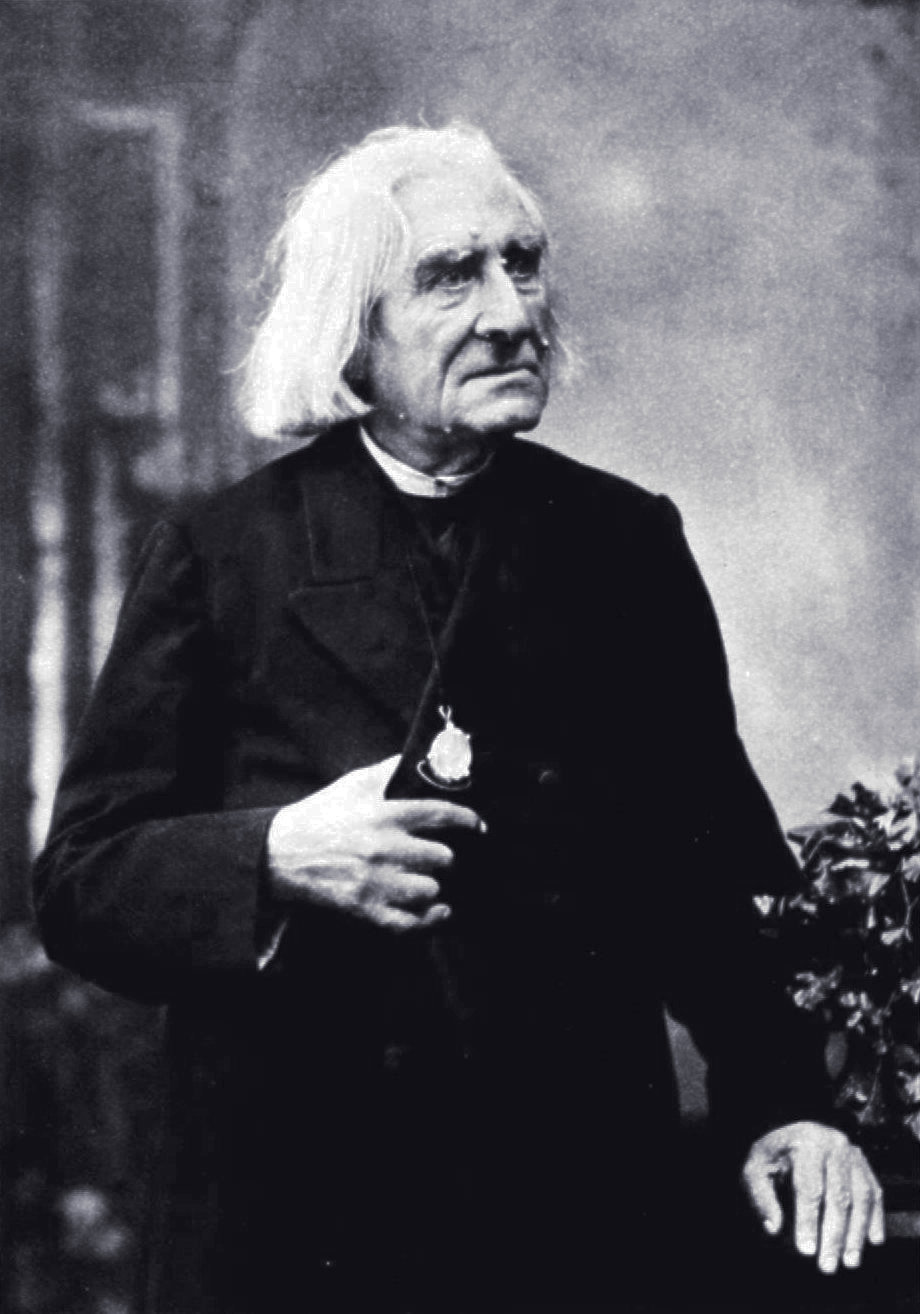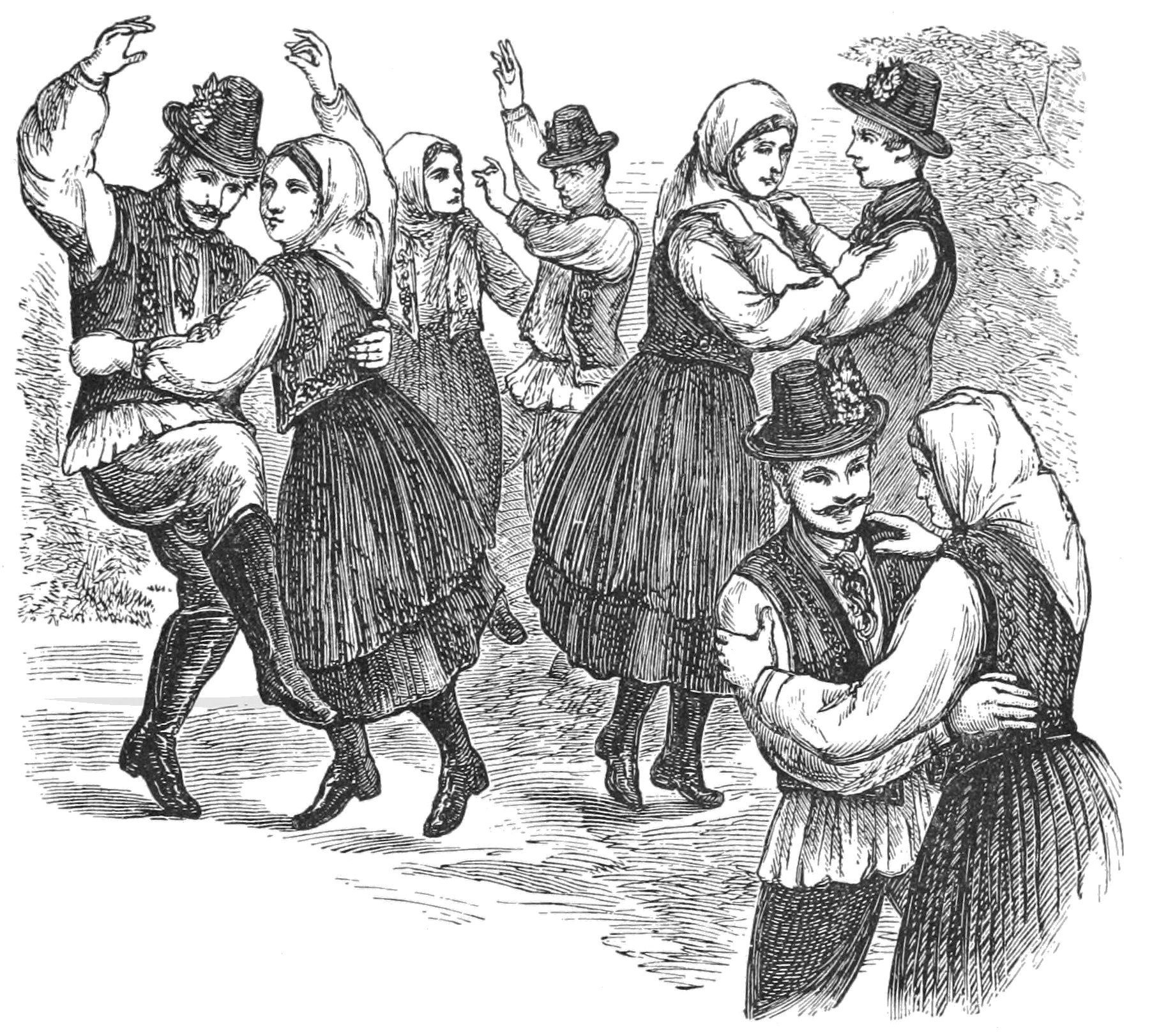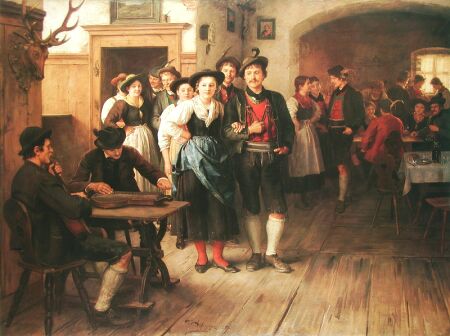|
Verbunkos
Verbunkos (), other spellings being ''Verbounko'', ''Verbunko'', ''Verbunkas'', ''Werbunkos'', ''Werbunkosch'', ''Verbunkoche''; sometimes known simply as the hongroise or ungarischer Tanz is an 18th-century Hungarian dance and music genre. The verbunkos is typically in a pair of sections, slow (''lassú''), with a characteristic dotted rhythm, and fast (''friss''), with virtuosic running-note passages. In some cases, this slow-fast pair alternates at greater length. The name is derived from the German word ''Werbung'', a noun derived from the verb ''werben'' that means, in particular, "to recruit"; verbunkos—recruiter. This music and dance was played during military recruiting before the Habsburg Emperors, who were also Kings of Hungary, introduced conscription in 1849. A group of a dozen hussars performed the dance in different parts, with the leading sergeant opening with slow movements, then the lower officers joining for more energetic parts, and the youngest soldiers con ... [...More Info...] [...Related Items...] OR: [Wikipedia] [Google] [Baidu] |
Music Of Hungary
Hungary has made many contributions to the fields of folk, popular and classical music. Hungarian folk music is a prominent part of the national identity and continues to play a major part in Hungarian music. It is also strong in the Szabolcs-Szatmár area and in the southwest part of Transdanubia. The Busójárás carnival in Mohács is a major Hungarian folk music event, formerly featuring the long-established and well-regarded Bogyiszló orchestra.Broughton, p. 159-167 Hungarian classical music has long been an "experiment, made from Hungarian antedecents and on Hungarian soil, to create a conscious musical culture sing themusical world of the folk song". Although the Hungarian upper class has long had cultural and political connections with the rest of Europe, leading to an influx of European musical ideas, the rural peasants maintained their own traditions such that by the end of the 19th century Hungarian composers could draw on rural peasant music to (re)create a Hung ... [...More Info...] [...Related Items...] OR: [Wikipedia] [Google] [Baidu] |
Contrasts (Bartók)
''Contrasts'' ( Sz. 111, BB 116) is a 1938 composition scored for clarinet-violin-piano trio by Béla Bartók (1881–1945). It is based on Hungarian and Romanian dance melodies and has three movements with a combined duration of 17–20 minutes. Bartók wrote the work in response to a letter from violinist Joseph Szigeti, although it was officially commissioned by clarinetist Benny Goodman. Structure The work is in three movements: #''Verbunkos'' (Recruiting Dance) #''Pihenő'' (Relaxation) #''Sebes'' (Fast Dance) The movements contrast in tempo. The first movement contains a cadenza for clarinet and the last one for violin. The piece features examples of alternate or dual-thirds (C and C in an A triad): :Seiber 1949 This mixed thirds structure may be thought of as bitonal in that the major and minor third of a triad are used. This structure may be extended through considering each third of the original triad as also being a possible third in a triad a half step in eith ... [...More Info...] [...Related Items...] OR: [Wikipedia] [Google] [Baidu] |
Hussar
A hussar ( , ; hu, huszár, pl, husarz, sh, husar / ) was a member of a class of light cavalry, originating in Central Europe during the 15th and 16th centuries. The title and distinctive dress of these horsemen were subsequently widely adopted by light cavalry regiments in European armies in the late 17th and early 18th centuries. By the 19th century, hussars wore jackets decorated with braid and shako or busby hats and they developed a romanticized image of being dashing and adventurous. A small number of modern armies retain the designation of hussars for some armored (tank) units. As well, some modern armies have ceremonial mounted units which wear historical hussar uniforms on parades or to provide a VIP escort to national leaders. Historically, the term derives from the cavalry of late medieval Hungary, under Matthias Corvinus, with mainly Serb warriors. Etymology Etymologists are divided over the derivation of the word ''hussar''. Several alternative theorie ... [...More Info...] [...Related Items...] OR: [Wikipedia] [Google] [Baidu] |
Hungarian Dance
Hungarian dance refers to the folk dances practised and performed by the Hungarians, both amongst the populations native to Hungary and its neighbours, and also amongst the Hungarian diaspora. According to György Martin, a prominent folklore expert, Hungarian dances can be divided into two categories. The first refers to dances performed in the middle ages while the second relates to the 18th and 19th century. Hungarians have been noted for their "exceptionally well developed sense of rhythm".Karoly Viski (1937) ''Hungarian Dances''; p. 8 In the mid-19th century, Musicologist Theodor Billroth performed tests with troops of various nationalities stationed in Vienna and found that the Hungarian troops outperformed others in keeping time with music. Improvisation and energetic movements are often mentioned as being characteristic of Hungarian dance.György Martin (1974) ''Hungarian Folk Dances''. Gyoma: Kner Printing House, p. 15. Daniel Berzsenyi wrote, "Its secret laws are not orde ... [...More Info...] [...Related Items...] OR: [Wikipedia] [Google] [Baidu] |
Hungarian Dances
Hungarian dance refers to the folk dances practised and performed by the Hungarians, both amongst the populations native to Hungary and its neighbours, and also amongst the Hungarian diaspora. According to György Martin, a prominent folklore expert, Hungarian dances can be divided into two categories. The first refers to dances performed in the middle ages while the second relates to the 18th and 19th century. Hungarians have been noted for their "exceptionally well developed sense of rhythm".Karoly Viski (1937) ''Hungarian Dances''; p. 8 In the mid-19th century, Musicologist Theodor Billroth performed tests with troops of various nationalities stationed in Vienna and found that the Hungarian troops outperformed others in keeping time with music. Improvisation and energetic movements are often mentioned as being characteristic of Hungarian dance.György Martin (1974) ''Hungarian Folk Dances''. Gyoma: Kner Printing House, p. 15. Daniel Berzsenyi wrote, "Its secret laws are not orde ... [...More Info...] [...Related Items...] OR: [Wikipedia] [Google] [Baidu] |
Conscription
Conscription (also called the draft in the United States) is the state-mandated enlistment of people in a national service, mainly a military service. Conscription dates back to antiquity and it continues in some countries to the present day under various names. The modern system of near-universal national conscription for young men dates to the French Revolution in the 1790s, where it became the basis of a very large and powerful military. Most European nations later copied the system in peacetime, so that men at a certain age would serve 1–8 years on active duty and then transfer to the reserve force. Conscription is controversial for a range of reasons, including conscientious objection to military engagements on religious or philosophical grounds; political objection, for example to service for a disliked government or unpopular war; sexism, in that historically men have been subject to the draft in the most cases; and ideological objection, for example, to a perceived vio ... [...More Info...] [...Related Items...] OR: [Wikipedia] [Google] [Baidu] |
Piano Trio No
The piano is a stringed keyboard instrument in which the strings are struck by wooden hammers that are coated with a softer material (modern hammers are covered with dense wool felt; some early pianos used leather). It is played using a musical keyboard, keyboard, which is a row of keys (small levers) that the performer presses down or strikes with the fingers and thumbs of both hands to cause the hammers to strike the strings. It was invented in Italy by Bartolomeo Cristofori around the year 1700. Description The word "piano" is a shortened form of ''pianoforte'', the Italian term for the early 1700s versions of the instrument, which in turn derives from ''clavicembalo col piano e forte'' (key cimbalom with quiet and loud)Pollens (1995, 238) and ''fortepiano''. The Italian musical terms ''piano'' and ''forte'' indicate "soft" and "loud" respectively, in this context referring to the variations in volume (i.e., loudness) produced in response to a pianist's touch or pressure on ... [...More Info...] [...Related Items...] OR: [Wikipedia] [Google] [Baidu] |
Hungarian Styles Of Music
Hungarian may refer to: * Hungary, a country in Central Europe * Kingdom of Hungary, state of Hungary, existing between 1000 and 1946 * Hungarians, ethnic groups in Hungary * Hungarian algorithm, a polynomial time algorithm for solving the assignment problem * Hungarian language, a Finno-Ugric language spoken in Hungary and all neighbouring countries * Hungarian notation, a naming convention in computer programming * Hungarian cuisine Hungarian or Magyar cuisine is the cuisine characteristic of the nation of Hungary and its primary ethnic group, the Magyars. Traditional Hungarian dishes are primarily based on meats, seasonal vegetables, fruits, bread, and dairy products. ..., the cuisine of Hungary and the Hungarians See also * * {{disambiguation Language and nationality disambiguation pages ... [...More Info...] [...Related Items...] OR: [Wikipedia] [Google] [Baidu] |
Morristown, New Jersey
Morristown () is a town and the county seat of Morris County, in the U.S. state of New Jersey.New Jersey County Map . Accessed July 10, 2017. Morristown has been called "the military capital of the American Revolution" because of its strategic role in the war for independence from Great Britain. Today this history is visible in a variety of locations throughout the town that collectively make up [...More Info...] [...Related Items...] OR: [Wikipedia] [Google] [Baidu] |
Cambridge Companions To Music
The Cambridge Companions to Music form a book series published by Cambridge University Press Cambridge University Press is the university press of the University of Cambridge. Granted letters patent by Henry VIII of England, King Henry VIII in 1534, it is the oldest university press in the world. It is also the King's Printer. Cambr .... Each book is a collection of essays on the topic commissioned by the publisher. on Cambridge University Press website, accessed 21 September 2015. Volumes (sortable table) References External links [...More Info...] [...Related Items...] OR: [Wikipedia] [Google] [Baidu] |
The New Grove Dictionary Of Music And Musicians
''The New Grove Dictionary of Music and Musicians'' is an encyclopedic dictionary of music and musicians. Along with the German-language ''Die Musik in Geschichte und Gegenwart'', it is one of the largest reference works on the history and theory of music. Earlier editions were published under the titles ''A Dictionary of Music and Musicians'', and ''Grove's Dictionary of Music and Musicians''; the work has gone through several editions since the 19th century and is widely used. In recent years it has been made available as an electronic resource called ''Grove Music Online'', which is now an important part of ''Oxford Music Online''. ''A Dictionary of Music and Musicians'' ''A Dictionary of Music and Musicians'' was first published in London by Macmillan and Co. in four volumes (1879, 1880, 1883, 1889) edited by George Grove with an Appendix edited by J. A. Fuller Maitland in the fourth volume. An Index edited by Mrs. E. Wodehouse was issued as a separate volume in 1890. I ... [...More Info...] [...Related Items...] OR: [Wikipedia] [Google] [Baidu] |
Schuhplattler
The Schuhplattler is a traditional style of folk dance popular in the regions of Bavaria and Tyrol (southern Germany, Austria and the German speaking regions of northern Italy). In this dance, the performers stomp, clap and strike the soles of their shoes (Schuhe), thighs and knees with their hands held flat (platt). There are more than 150 basic Schuhplattlers, as well as marches and acrobatic feats that are often interspersed with the basic dance in performance. They may be seen today in Europe and in German immigrant communities around the world. While the Schuhplattler is still largely performed by adults, it has become increasingly popular with youngsters, who love its colorful costumes and its bouncing, leaping, kicking and choreographed horseplay. History and style The Schuhplattler is thought to date from Neolithic times, about 3000 BC, but it is first of record in 1030 AD, when a monk in the Tegernsee Abbey of Bavaria described a village dance containing leaps and h ... [...More Info...] [...Related Items...] OR: [Wikipedia] [Google] [Baidu] |

.jpg)



